Getting rid of your hallway can be a great way to maximize space in your home. If you have a narrow living room, it can be a great option to widen the space. For me, it meant getting bigger sofas. But before you start breaking your walls, make sure it’s the right decision for you.
Should you get rid of your hallway?
Removing your hallway or adjoining walls can be beneficial in terms of additional space and a way to maximize the room in your home. As well as structural considerations to be aware of, there are other factors to consider including an increase in heating bills, less privacy, and less storage space.
When I moved into my home I was very fortunate to already have a porch installed, which I felt served the same purpose as a hallway. It made the decision very simple for me. My living room would have been far too small had I kept the existing hallway wall. That being said there were some other considerations that would have been useful to know before I took a hammer to my wall, which you guys get to benefit from.
Find out if you are removing a load-bearing wall in your hallway or Home
A load-bearing wall is a wall that bears the weight or holds up the ceiling. It’s structurally integral to your home.
If you’re familiar with the game Jenga, the load-bearing wall is that Jenga piece holding the structure together, until you remove it, and the tower comes crashing down.
You can still remove the wall, even if it’s load-bearing, but you need to know if it is so you can remove it safely. This involves replacing the wall with a support beam or girder, but we’ll get into that later.
A non-load-bearing wall on the other hand only holds itself up. To remove this wall all you need to do is take it down with your trusted hammer.
How can you tell if your hallway wall is a non-load bearing?
So here’s a few tips to tell if your wall is load bearing or not. You can use these tips to get a flavour yourself, but if you’re not sure, consult a builder (obviously).
Does your wall run parallel to the ceiling beams of your house?

If your wall runs parallel, i.e in the same direction of your ceiling beams, the chances are that your wall is a non-load-bearing and you can remove it no problem.
If your wall is hollow, or a stud wall, this is also a good sign that it’s not load-bearing as well.
Does your wall run perpendicular to the ceiling beams of your house?
This involves checking if your wall runs at right angles to beams. Unless your beams are exposed, a good guide is to go into your loft space and look at the direction of your ceiling beams.
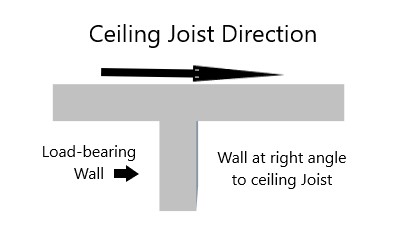
If the wall you are looking to replace runs at right angles to it, it could be load-bearing. At this point, get your builder in to check.
Here it’s likely you will need a support beam or a girder to continue to support your home once the wall is removed. This is where you get the builder.
Removing non-load bearing walls are DIY, but when it comes to support beams, it’s time to get the professionals in.
Do you need planning permission to knock down an internal wall?

Most local authorities do not require planning permission to remove an internal wall.
That being said, if you are replacing a load-bearing wall, it’s worth checking with your local authority if you need to submit any plans.
It’s worth finding out if you need planning, primarily because if you choose to sell your home in years to come, you may need to verify any works done with your buyer’s solicitors for example.
Are hallways a waste of space?
Hallways are not a waste of space and fulfill a number of purposes in your home. So before you remove it, make sure you’re aware of what you’re losing.
Hallways serve the following purpose:
- Air-circulation between different floor levels
- Unwanted draft between outdoors and indoor living spaces
- Extra time to straighten up your living room before guests come in
- Help keep heat in your living room
So hallways have their uses. That being said if you have a small home like I do, getting rid of a hallway can really make a positive difference to your space. But here’s a bit more on these points just so you’ve got the full picture.
Air-circulation between different floor levels

Because hallways are an entry point into your home, in the winter you’ll find that they tend to be colder than the rest of your house. That being said they provide a purpose of letting ‘stale’ air out of your home and ‘fresh’ air in.
As you move around your house, the air circulates around your home.
Unwanted draft between outdoors and indoor living spaces

When you get rid of your hallway, the air will of course still circulate around your home, but you will of course be exposing yourself more to the elements than before if your outside door opens directly into your living room for example.
A way around this is if you get a porch, which can give you that extra protection against the elements and privacy.
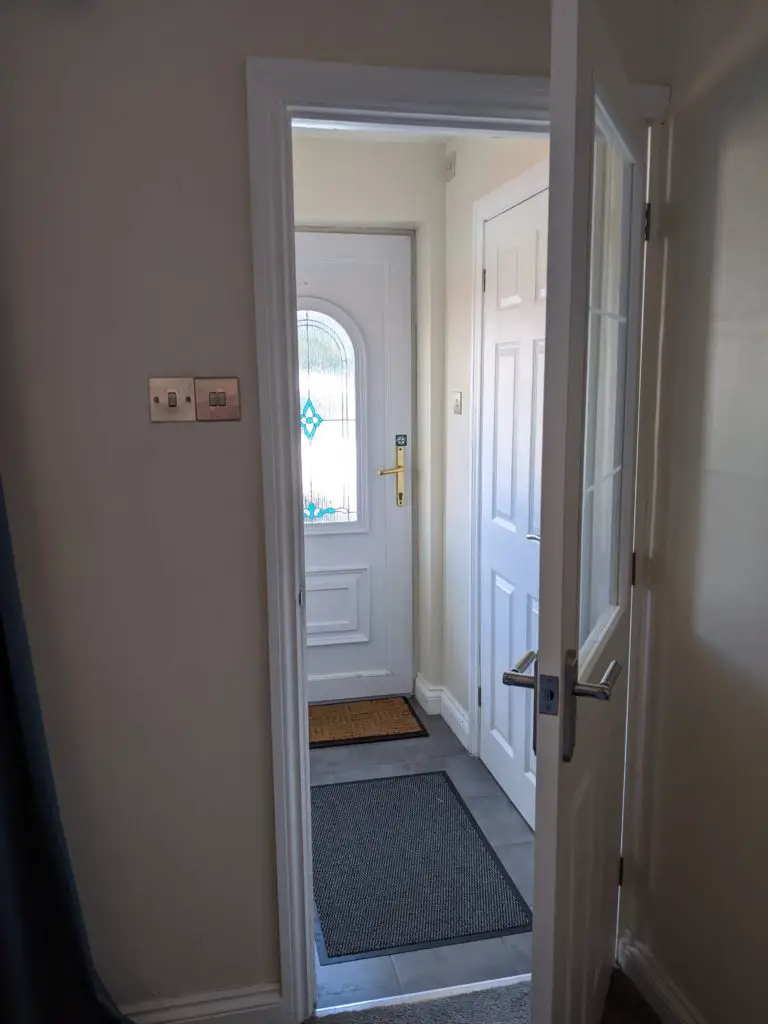
As mentioned, I was fortunate to already have a porch that was built before I moved in and for me, it serves the same purpose as a hallway. If you don’t already have a porch, it’s likely that you’ll need to inform your local planning authority before you begin building one.
Extra time to straighten up your living room before guests come in

Hallways are great for giving you that extra time. If you get unexpected guests, it gives you that couple of minutes to straighten up your living room before they come in. If you prefer guests to remove their shoes before they enter, hallways are great for that too!
The direction that your doors open into a room can also give you those extra precious seconds and extra privacy too. We’ve got some extra detail in our post on hanging doors if this is a job you’re looking at doing as well.
Hallways are particularly useful in maintaining your privacy from Door to door salespeople and your living room for example. It’s also keeping that distance from the living space and is less of a distraction from watching the television for example.
Hallways Help to keep heat in your living room

Having defined rooms, is a cost efficient way to live when in comes to heating. Having a separate living room and hallway space is an efficient way to keep warm up your living room faster.
Most families spend a lot of time in their living room. If you have an isolated heater in that room, it’s efficient and quick to warm up that room without hiking up your bills.
That being said, when you need the space,you need the space. Only you can be the judge of that.
Removing your Hallway – Higher Electricity Bills
Open plan living, in general, can lead to higher heating bills, mainly because you have a larger surface area to heat and it takes longer to warm the room up.
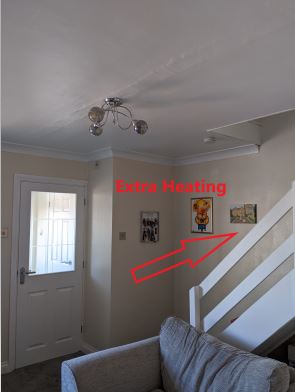
Getting rid of your hallway can increase your heating bills even more than you would expect, especially if you have an exposed staircase. This is because the hot air will travel up your staircase and landing as well.
Unless you isolate i.e, partition off your staircase, you will experience higher energy bills here.
Is Open Plan living a good idea
Open plan living has so many benefits, and can really help you utilize the space in a small home. As much as I love it though, it’s definitely harder to keep tidy and clutter-free than homes that don’t have an open plan design.
Here are my pros and cons of Open Plan Living
| Pros | Cons |
| More Natural Light | Noise |
| Larger open spaces | Hard to keep clean |
| Great for Entertaining | Less Storage |
| More furniture options | Traveling smells |
Open Plan living is an adjustment, so before you take your sledge hammer to any wall, make sure you know what you are in for. Let’s get into the pros and cons in a little more detail.
Open Plan Living: The Pros
More Natural Light
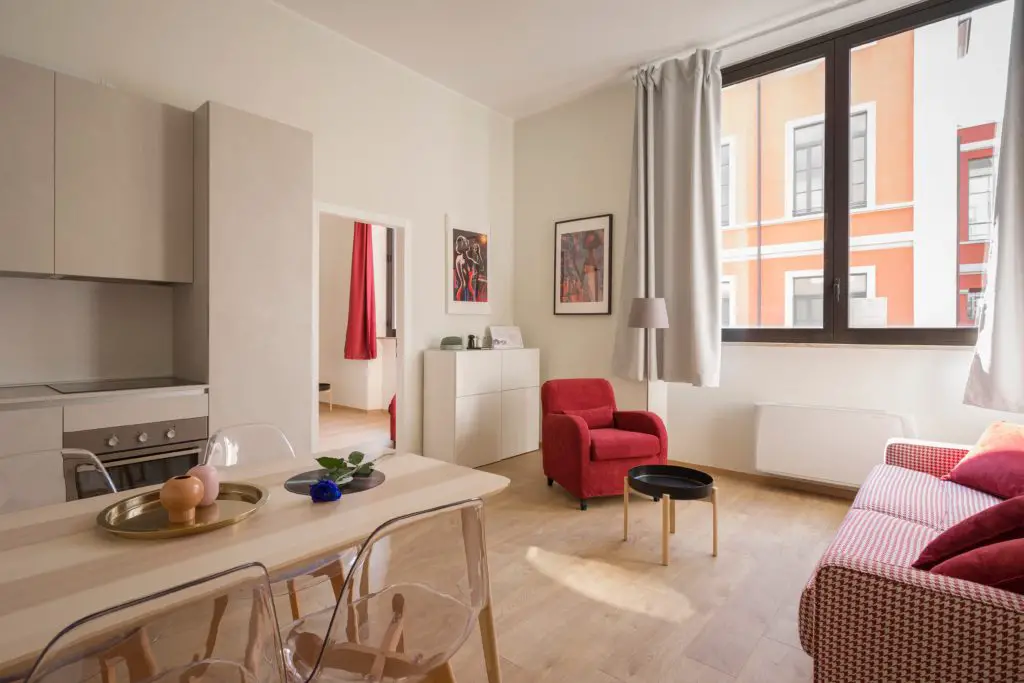
Having an open plan home generally means that you will have more natural light traveling throughout. This is awesome all year round to be honest, and one of the main reasons I personally choose to live open plan.
Larger open spaces
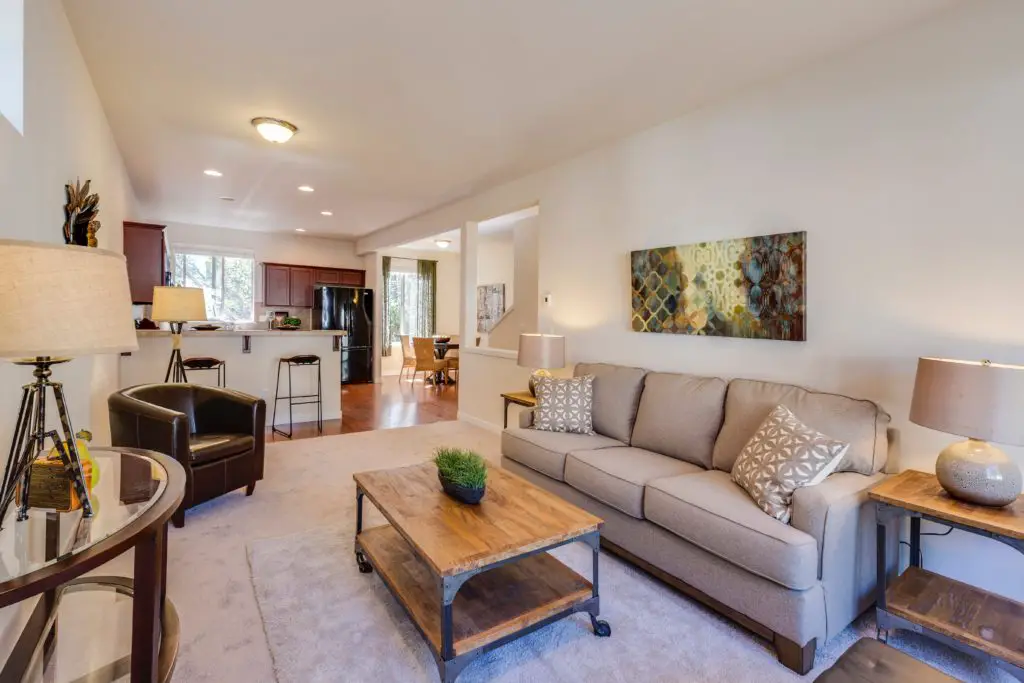
Homes with multiple rooms can seem much smaller than they actually are. Removing walls can allow you to fully utilize the spaces in your home, and make it feel bigger.
It also allows you to showcase your home a bit better, which will likely have a positive impact on your homes salebility.
Great for Entertaining

Opening up you home, or having larger open spaces means that youcan entertain more easily giving people more room. One thing that we love to do when we have friends over is spwral out on the carpet when waht the TV.
We could of course do this if our home wasn’t as open plan but we wouldn’t have as much room.
More furniture options
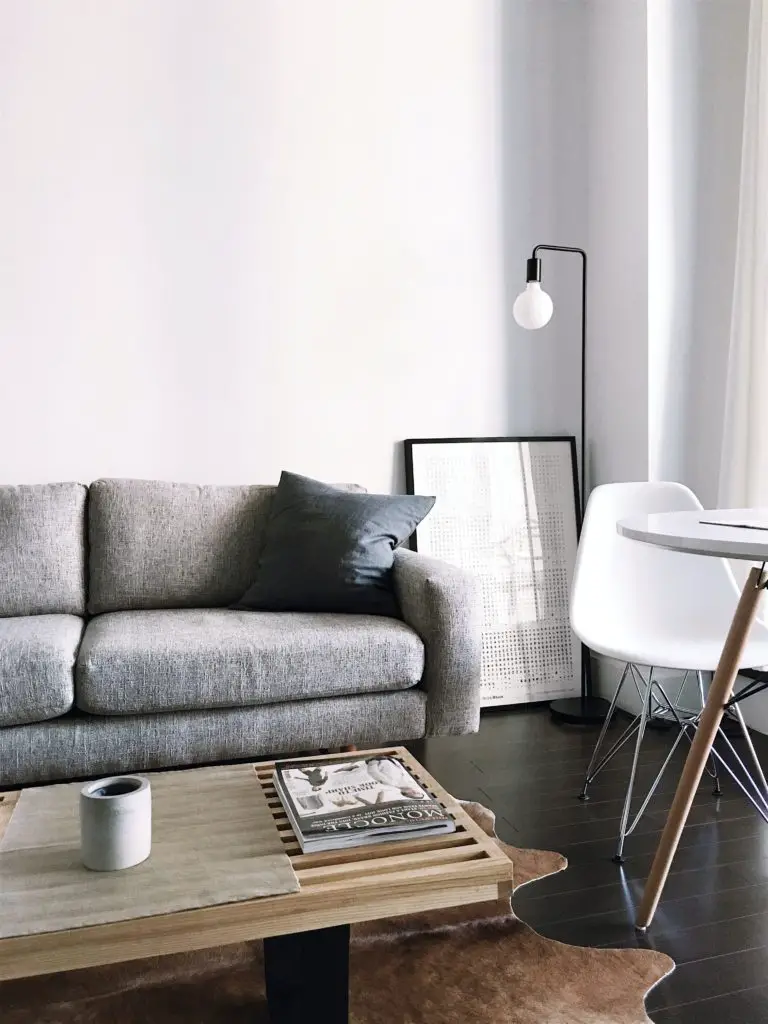
One of the reasons I removed my hallway in my home was that I couldn’t get a decent sized sofa set in my living room unless I did.
The room itself would have felt much more congested had I not removed the hallway wall.
My room for instance could not fit a ‘snuggler’ single sofa which is larger than the normal single sofas that you would usually buy, unless I removed the hall way wall
You can also buy larger dining tables, coffee tables and televisions because of the additional space that you have.
Open Plan Living: The Cons
Noise

So noise tends to travel more in open spaces, and closing doors on people have less of an effect. It’s an obvious one that you may have already considered, but it’s one to note. Noise travels.
Harder to keep Clean

Open Plan spaces are harder to clean. I’m a naturally messy person, so it became really transparent to me that I needed to pick things up and get into tidier habits when we decided to live a more open-plan home life.
Messiness is just magnified in open place spaces, I’m not sure why but it’s true. You can’t lock things away in different rooms basically.
Less Storage
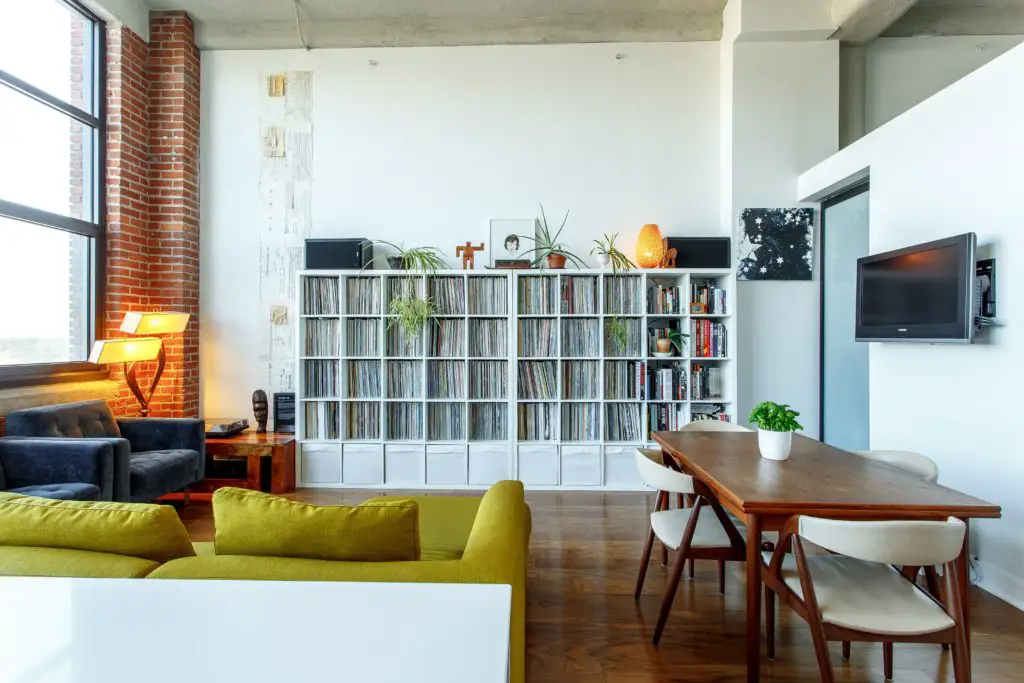
Having many rooms in your home can allow you to store things more easily here and there, without having to buy additional storage. Living a more open plan lifestyle can mean that you’ll have to buy more storage furniture like sideboards for example.
Be careful though, try and look for clever storage solutions, to keep the open plan feel of your home. If you don’t, you may find yourself making the room look smaller and cluttered, which kind of defeats the point of open plan living in the first place.
Travelling Smells

One thing that a lot of people do not necessarily consider is the role rooms play in isolating smells in a home.
We cook a lot of indian food at home, and tend to eat it in the living room. The smells do travel around the house but I kind of like it.
I can see that a lot of people may not like the idea of this though. We do have to get the air fresheners out on occasion too. It’s just something to keep in mind before you decide to live open plan.
How do you arrange furniture in an Open plan living room?
Arranging your furniture in your open plan living room is super important to make sure that you maximize the space available to you.
These are my general tips when it comes to maximizing your space.
- Buy furniture you need, not what you want
- Mount your TV on a wall if you can
- Minimize the number of wall hangings on your wall
1. Buy furniture you need, not what you want
Open plan living is best when you minimize the amount of furniture that you have in a specific room. We bought things as we realized we needed them, rather than buying what we thought we needed.

The space you have is much more valuable than furniture, and it’s what you pay for when you buy your house if you think about it.
2. Mount your TV on a wall if you can
Putting your TV on a wall is one of the biggest space savers out there, and it looks really cool.
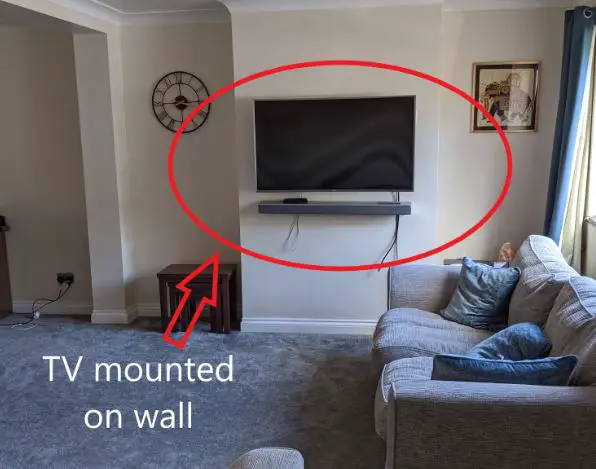
TVs are focal points in most peoples living rooms. Most people tend to position their furniture towards it in any given room where there is one.
If you currently have a television in a designated corner in your room, imagine the extra space you have one you mount it on a wall. It’s an extra coffee table spot or whatever takes your fancy to be honest.
3.Minimize the number of wall hangings on your wall
The number of wall hangings on your wall can make your room look cluttered and defeat the point of an open plan room.
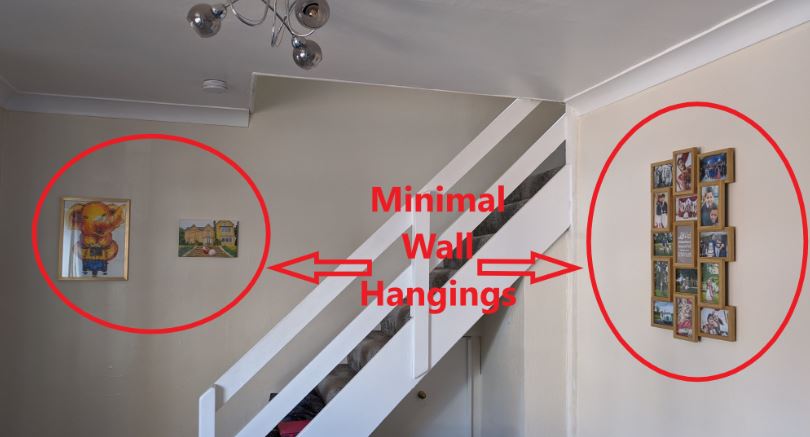
It’s important to place your stamp on a room, and I have done that through the wall hangings in my room. It can be tempting to put up lots and lot’s of picture, but too much can be overwhelming.
Choosing a few hangings, that best define you rather than lots tend to have more of an impact in any given room. Too many hangings, tend to take away from that.
Should I make my kitchen open plan?
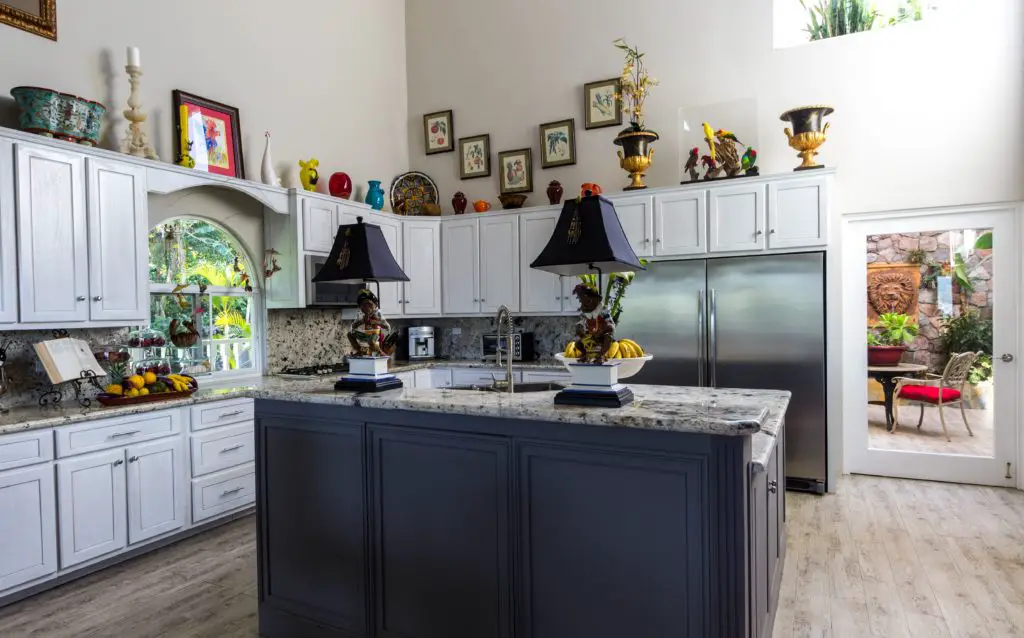
Making your kitchen open plan is tricky decision to make. We were considering opening up our kitchen and living room space, but decided against it for a few reasons.
Making your kitchen open plan – Why I decided against it
- The potential fumes traveling through the house
- The increase in humidity
- Traveling smells
The potential fumes traveling through the house
Depending on what you cook or burn, fumes can travel throughout the house. The thought of the fumes traveling through the house during or after you’ve finished cooking wasn’t very appealing to me.
The increase in humidity
Whenever we’re cooking or boiling anything, the kitchen tends to get all hot and steamy (but not in a good way). I wanted to isolate that to the kitchen. It would contribute to more fluctuating temperatures in your living space, which could in turn cause damage to your furniture.
Not only that, humidity can lead to black mold around your home too.
Traveling smells
The kitchen smells are not just limited to cooking smells. They also include rubbish bins and general kitchen waste. Extractor fans can only do so much. If you going to have an open plan kitchen, be prepared to take out the rubbish regularly.
Want more information?
Hopefully, this information has been useful for you, but if you are looking for more information, here are some other resources that you might find useful.
Real Homes.com has a useful post on planing your open-plan space as well as structural implications.
Houzz.co.uk has an interesting article on ‘broken plan’ living which combines open plan living with traditional room structures.
Loveproperty.com has got some great partition and design ideas when it comes to an open plan home in this post.
In Summary…
Removing a hallway from your home and adopting a more open plan lifestyle can be great, but it comes with it’s challenges.
Before you remove a wall, it’s important to find out if the wall that you are removing is load-bearing or not, and hopefully the tips outlined in this article will help you to establish what kind of wall you have, and take appropriate measures.
When it comes to open plan living, theres some important considerations that you should be aware of. This includes the likely increase in your heating bills, the need to become tidier, the increase in noise as well as the other factors mentioned in this artice.
How much furniture you keep and placement is also important in maximising space in any room. Over cluttering a room in your home can be counterproductive.
I hope you enjoyed this article, if there’s another job you’re thinking about doing in your home, why not check out some more of my content, maybe I’ve already been through what you’re thinking about doing next.

